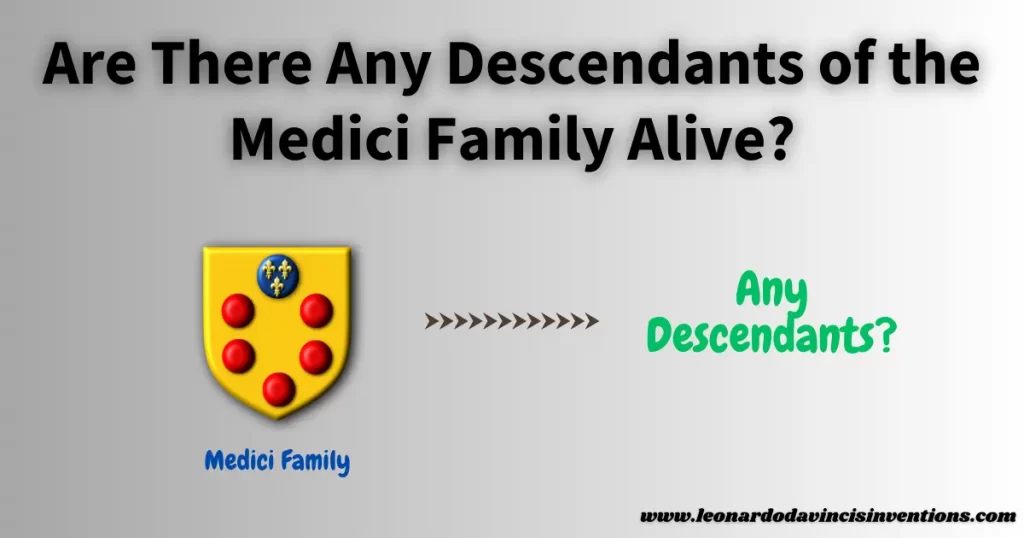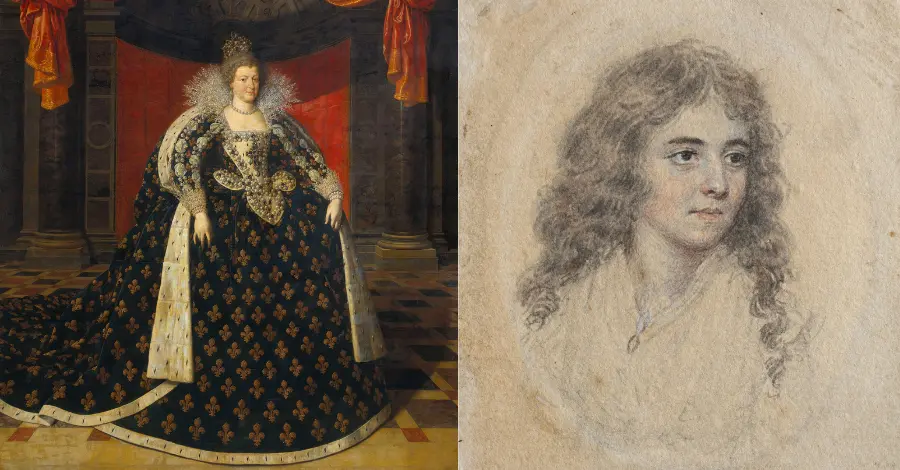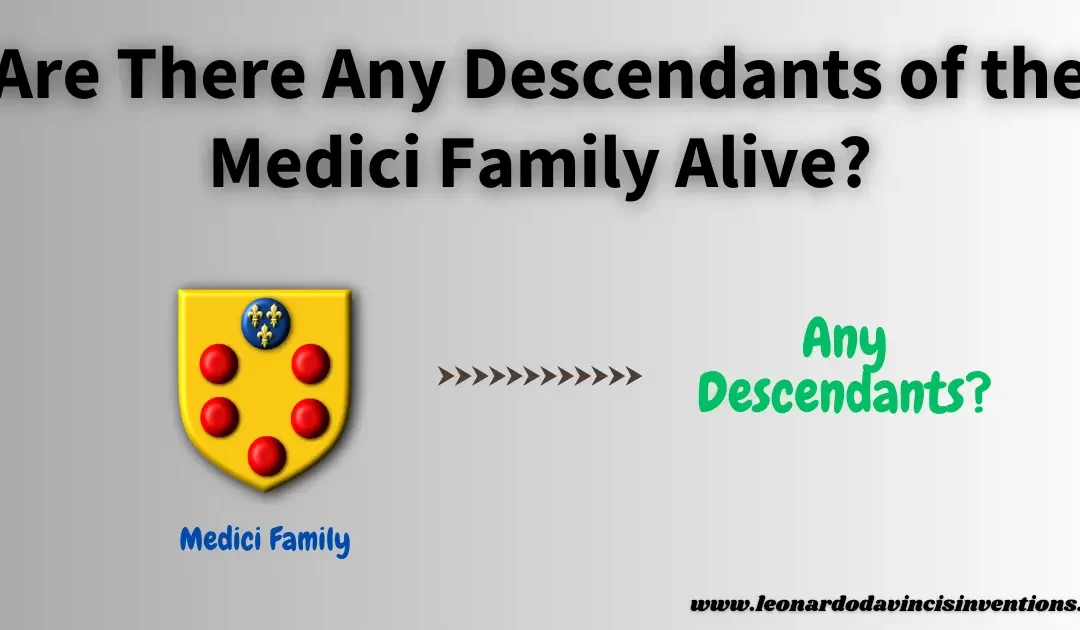
Are there any descendants of the Medici family alive? Many people are fascinated by this powerful Renaissance dynasty, but are not sure if any of its bloodline survives today.
The Medici family’s direct bloodline ended in the 18th century. Distant descendants from indirect branches still live today, though they no longer hold the same power or status as their ancestors.
The Medici legacy continues in unexpected ways. Some present-day families claim links, and there are notable connections to modern public figures.
To understand how the Medici legacy lives on, you’ll learn about the end of their main line and possible living relatives. The Medici name still appears in modern society.
The Medici Family Legacy and Historical Influence
The Medici family became one of European history’s most famous and powerful families. Their banking empire, political dynasty, and patronage shaped Florence and influenced European culture, religion, and royal bloodlines.
The Rise of the Medici Family as a Banking Family and Political Dynasty
The Medici family started as wool merchants in Florence. They grew wealthy and influential through banking.
Giovanni di Bicci de’ Medici founded the Medici Bank in the early 15th century. The bank became one of the most successful in Europe.
Their financial power allowed them to control political offices and civic life in Florence, and the Medici family became the uncrowned rulers of the city.
They became Grand Dukes of Tuscany and held power for centuries. Their success marked their entry into the aristocracy.
Lorenzo the Magnificent and the Medici Patronage of Arts During the Italian Renaissance
Lorenzo the Magnificent led the family during Florence’s height in the Italian Renaissance. Under his leadership, the Medici family sponsored many artists, writers, and architects.
They supported Leonardo da Vinci, Botticelli, Michelangelo, and others. Lorenzo’s court became a center for creative talents and intellectuals in Europe.
The Medici patronage of the arts helped create masterpieces and fostered Florence’s golden age. This support contributed greatly to the Medici family’s legacy.
The Medici Coat of Arms and Symbols of Medici Family Power in Florence
The Medici coat of arms displays six balls, or “palle,” on a gold shield. This emblem symbolized the Medici family’s power and wealth throughout Florence.
Medici symbols appear in many buildings, churches, and public spaces in the city.
Medici Family Symbols:
- The six red balls (palle) on a gold background
- The Grand Ducal crown
- The motto “Semper” (Always)
The use of these symbols reminded citizens of the Medici influence. Their distinctive crest marked their presence on the city’s culture and architecture.
Famous Medici Members and Their Impact on European Royal Bloodlines
Famous Medici members shaped royal bloodlines across Europe through marriage alliances. Catherine de’ Medici became Queen Consort of France and mothered three French kings.
Marie de’ Medici also served as Queen of France by marrying King Henry IV. These marriages connected the Medici bloodline to French and other European royal families.
The main Medici family branch became extinct with the Last Medici, Anna Maria Luisa. While there are indirect descendants, no direct descendants are from the main Medici line.
The Role of Popes from the Medici in Shaping Religious and Political History
Four Popes came from the Medici line: Leo X, Clement VII, Pius IV, and Leo XI. Each played a major role in the Catholic Church and European politics.
Leo X, born Giovanni de’ Medici, supported Renaissance art projects and faced Martin Luther’s challenge. Clement VII dealt with the turmoil of the Protestant Reformation and the sack of Rome in 1527.
Pius IV worked to strengthen the Church after the Council of Trent. Leo XI had a very short papacy.
These Popes from the Medici guided religious policy and diplomacy, expanding the Medici family influence beyond Florence. Their actions affected religious and political developments for generations.
Genealogy and Lineage of the Medici Family

Are there any descendants of the Medici family alive today? Exploring this question involves the Medici genealogy, their family tree, marriage alliances, and the reasons for the extinction of their direct line.
Exploring the Medici Family Tree and Branches Through History
The Medici family tree began with Giovanni di Bicci in the late 14th century. He founded the powerful Medici banking empire in Florence.
Over the generations, several branches formed to manage their wealth and influence. The main line produced famous Medici members like Cosimo the Elder and Lorenzo the Magnificent.
Not all Medici branches held equal power. The senior branch ruled Florence, while other branches managed Medici estates elsewhere in Tuscany.
Medici genealogy shows a family that adapted over time. Their political dynasty created ties through blood and marriage, strengthening their influence across Italy.
The Last Medici: Anna Maria Luisa and the Extinction of the Line
The direct line of the Medici dynasty ended with Anna Maria Luisa de’ Medici in 1743. As the last Medici heir, she held the title of Electress Palatine.
She had no children, and her death marked the extinction of the main Medici lineage. Anna Maria Luisa protected the Medici family’s art collections by signing the “Family Pact,” which kept their treasures in Florence.
After her, no legitimate Medici heirs survived.
Medici Marriage Alliances and Connections to European Royal Families
The Medici family made strategic marriage alliances with leading European royal families. These unions expanded their influence beyond Italy and integrated Medici blood into many royal bloodlines.
Catherine de’ Medici became Queen of France, and Marie de’ Medici also ruled as queen. These marriages brought political advantages.
Through these alliances, the Medici helped shape European history, connecting Tuscany’s leading family to France, Spain, and the Holy Roman Empire. The Medici coat of arms and name spread across Europe, reflecting their powerful ties.
These connections still appear in some European nobility’s family trees today, though not as direct Medici descendants.
Why There Are No Direct Descendants of the Medici Family Today
No direct descendants of the Medici family survive today. The main line ended with Anna Maria Luisa, while other branches failed to produce long-lasting lines.
Many Medici children died young, became clergy, or had no heirs. Marriage alliances did not guarantee surviving offspring, so the family name faded.
Despite some modern families claiming descent from the Medici, historians confirm that the legitimate bloodline died out with Anna Maria Luisa. This fact is discussed further on specialist history sites and genealogy forums.
Although individuals today may carry distant Medici ancestry, there are no living direct Medici heirs.
The Medici Bloodline and Its Influence on Tuscany’s Historical Legacy
The Medici bloodline changed the face of Florence and Tuscany. As a banking family and political dynasty, their patronage of the arts fueled the Italian Renaissance.
They produced four Popes—Leo X, Clement VII, Pius IV, and Leo XI—boosting their power. The Medici’s rule established Florence as a center of art, science, and finance.
Their legacy remains in the city’s architecture, museums, and institutions. Even with the Medici family’s extinction, their influence shaped the region’s culture and history for centuries.
Florence’s modern identity and wealth come from the Medici family history.
The End of the Medici Dynasty and Its Modern-Day Relevance
The Medici family shaped Florence and left a unique mark on European history. Their rise to power and influence in banking reveals important lessons about political strategy and the impact of dynasties.
Medici Dynasty End: Causes Behind the Medici Family’s Extinction
The Medici dynasty ended due to several family and political factors. By the early 18th century, the family struggled with a lack of male heirs, making the extinction of their line almost unavoidable.
Medici marriage alliances failed to secure enough legitimate male descendants. Succession became a key problem.
Health problems, early deaths, and infighting also hurt the Medici bloodline. Grand Duke Gian Gastone de’ Medici, the last ruling male, died in 1737 without offspring.
His sister, Anna Maria Luisa, became the last Medici, but she also left no heirs. With her death, the Medici family’s rule in Tuscany officially ended.
Medici Family Estates, Wealth, and the Decline of Medici Family Power
The Medici family once controlled vast estates and great wealth throughout Tuscany. Their power came from their banking empire and political connections in Florence.
By the late 17th and early 18th centuries, the family had lost most of its fortune. Funds mismanagement, a decline in banking profits, shifting trade routes, and foreign wars weakened the Medici’s influence.
The family sold estates and lost political offices. Their famous palaces, gardens, and art collections remained in Florence after Anna Maria Luisa arranged for the Medici legacy to stay tied to the city.
The Historical Legacy of Medici Family Rule and Politics in Florence
The Medici family left a deep mark on Florence. They ruled the city for centuries, guiding its politics with patronage and shrewd decisions.
They produced several Popes, including Leo X and Clement VII, and shaped the Catholic Church’s policies. Florence’s political scene during the Italian Renaissance saw the rise and fall of many families, but only the Medici managed to keep power for so long.
Their leadership brought stability during times of frequent warfare and shifting alliances. Their choices helped turn Florence into a major cultural and economic capital.
How the Medici Family Banking Empire Shaped Renaissance Europe
The Medici family banking empire became one of the most important financial institutions of the early modern world. Their bank influenced trade, art, and politics across Europe.
The Medici used their fortune to support artists such as Michelangelo and Leonardo da Vinci, helping launch the Italian Renaissance. The family gained immense power through wise investments, international connections, and lending money to royalty and the Vatican.
Their economic decisions set trends for other banking families in Europe.
Are There Any Descendants of the Medici Family Alive Today?
No direct descendants of the main Medici branch remain. Anna Maria Luisa, often called the last Medici, died in 1743, marking the end of the family’s direct rule and the extinction of their line from the main branch.
Today, some people in Europe claim Medici ancestry through distant branches or illegitimate lines, but these claims do not tie back to the prominent political dynasty of Florence. The Medici name and legacy survive in art, history, and architecture, not through living heirs.
The Medici influence can still be felt in Florence and beyond, but their family tree ended nearly three centuries ago.
Frequently Asked Questions
The Medici family had a major impact on Florence and European history. People often ask about their bloodline, fortunes, and lasting influence.
Does the Medici bloodline still exist?
The Medici family’s direct line ended in the 18th century. No confirmed direct descendants are alive today.
Some people have distant or indirect links to the Medici family through marriage or extended branches, which you can read about in discussions on modern Medici descendants.
Who was the last legitimate heir to the Medici dynasty?
Anna Maria Luisa de’ Medici was the last legitimate heir. She died in 1743, marking the official end of the main Medici family line.
Does the Medici home still exist?
Many Medici family homes and palaces still stand in Florence. The most famous is the Palazzo Medici Riccardi, which is a historical site that can be visited today.
Who is the current Prince Medici?
Some individuals, like Prince Lorenzo de’ Medici, claim to be modern heirs or representatives of the Medici name. These claims are often symbolic, as no official royal status or recognized lineage is tied to the historic Medici bloodline.
Who inherited the Medicis’ wealth?
Anna Maria Luisa de’ Medici left most of the Medici family’s wealth and property to the Tuscan state. She also ensured that major family collections stayed in Florence for public benefit.
Does the Pazzi family still exist?
The Pazzi family, known for rivaling the Medici, still has descendants in Italy today, though they are less prominent than they were during the Renaissance.
Did the Medici family go broke?
By the end of their rule, the Medici family lost much of its fortune and power. Costly wars, poor management, and changing political climates drained their resources.
Who was the most powerful family in Italy?
The Medici family was among the wealthiest and most powerful during the Italian Renaissance. They played a leading role in politics, banking, and culture.
What caused the downfall of the Medici family?
Financial trouble, lack of strong heirs, and political shifts led to the Medici family’s decline. After centuries of influence, their power faded.
How much would the Medici family be worth today?
It isn’t easy to give an exact value. The Medici family controlled vast banking wealth, art, and land.
Historians believe their fortune would rank among the richest in history if converted to modern values.




 Leonardo Bianchi,
the creator of Leonardo da Vinci's Inventions.
Thank you for visiting
Leonardo Bianchi,
the creator of Leonardo da Vinci's Inventions.
Thank you for visiting